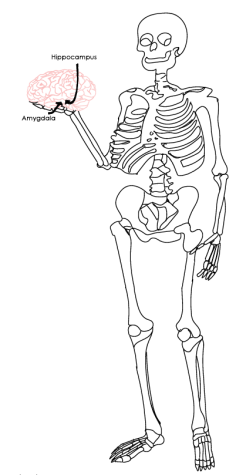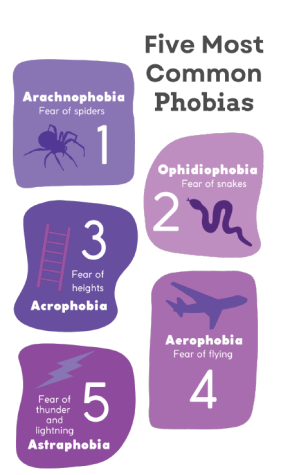How does fear affect the brain?

Imagine someone is walking through a haunted house. The lights are dim, and there is a suspicion of terrifying monsters around every corner. Their heart rate starts to rise, and the hairs on the back of their neck follow suit. Their fingers are trembling as they pull open a door, only to find a ghost awaiting their arrival, the scream in their throat feels like it can’t escape as they freeze. The amygdala has them in it’s hand, and only the hippocampus next door can save them.

A specific little spot in the human brain called the amygdala is responsible for providing the brain with fear, as the amygdala tells the brain about threats. Couldn’t a lot of things technically be a threat though? That’s where the hippocampus comes in. Luckily, while the amygdala tells the human body to go into a protective mode, the hippocampus can tell the brain to slow down and think. It brings context into the equation, and it can tell the amygdala not to worry.
 Sometimes though, the amygdala can tell the brain to be a lot more scared than normal which can lead to phobias. Some of the most common phobias are arachnophobia which is the fear of spiders and acrophobia which is the fear of heights.
Sometimes though, the amygdala can tell the brain to be a lot more scared than normal which can lead to phobias. Some of the most common phobias are arachnophobia which is the fear of spiders and acrophobia which is the fear of heights.
VanPelt may not have a diagnosed phobia, but she has a strong fear of bugs and the deep ocean.
“As I’ve grown up a little, I’m not as scared of bugs,” Vanpelt said. As people grow older, their phobias can lessen, letting adults have more peace.
“If someone is able to recognize his or her own personal responses and physiological symptoms to the trigger, he or she can then learn to change the way they respond to address the fears,” school psychologist Krisan Fedokovitz said.
Realizing how you react to fear can be an awakening experience, and trying to change the reaction from the fear could be very difficult. Overall though, it could give more peace of mind to the beholder.
“The good news for individuals who experience phobias is that there are effective treatments available,” Fedokovitz said. “Specific forms of therapy and/or medications can help to address the irrational fears.” People with a phobia might need some level of support, especially if the phobia affects their daily life.
“The best form of therapy for phobias is cognitive behavioral therapy,” Fedokovitz said. Cognitive behavioral therapy is a very helpful form of therapy where a person gets help managing their emotions and negative feelings.
Fret, for the amygdala and the hippocampus won’t let you out of their grasp even if you don’t have a phobia. There are many simple fears that are very real and frightening and relevant – public speaking and test taking to name a few. Psychology and history teacher Carter Mauter and Vanpelt said that they find school related responsibilities scary to fulfill. For VanPelt, the fear of failure is a casual acquaintance to attending school. For Mauter, not being able to go to school is terrifying. “I worry about my own health, or like being able to keep working than I did when I was younger,” Mauter said. “But it’s more like the responsibility part that scares me now.”

Emily Jones is a senior at Stockbridge High School, who recently moved from her hometown, Camby, Indiana. She is an inspired soul with a love of books...







